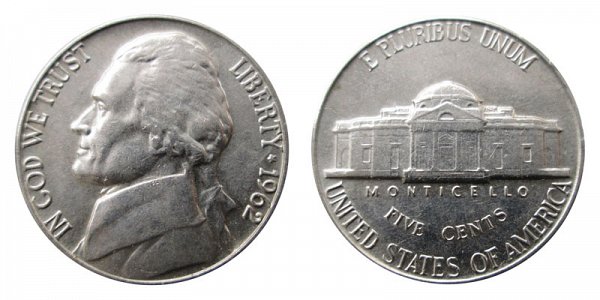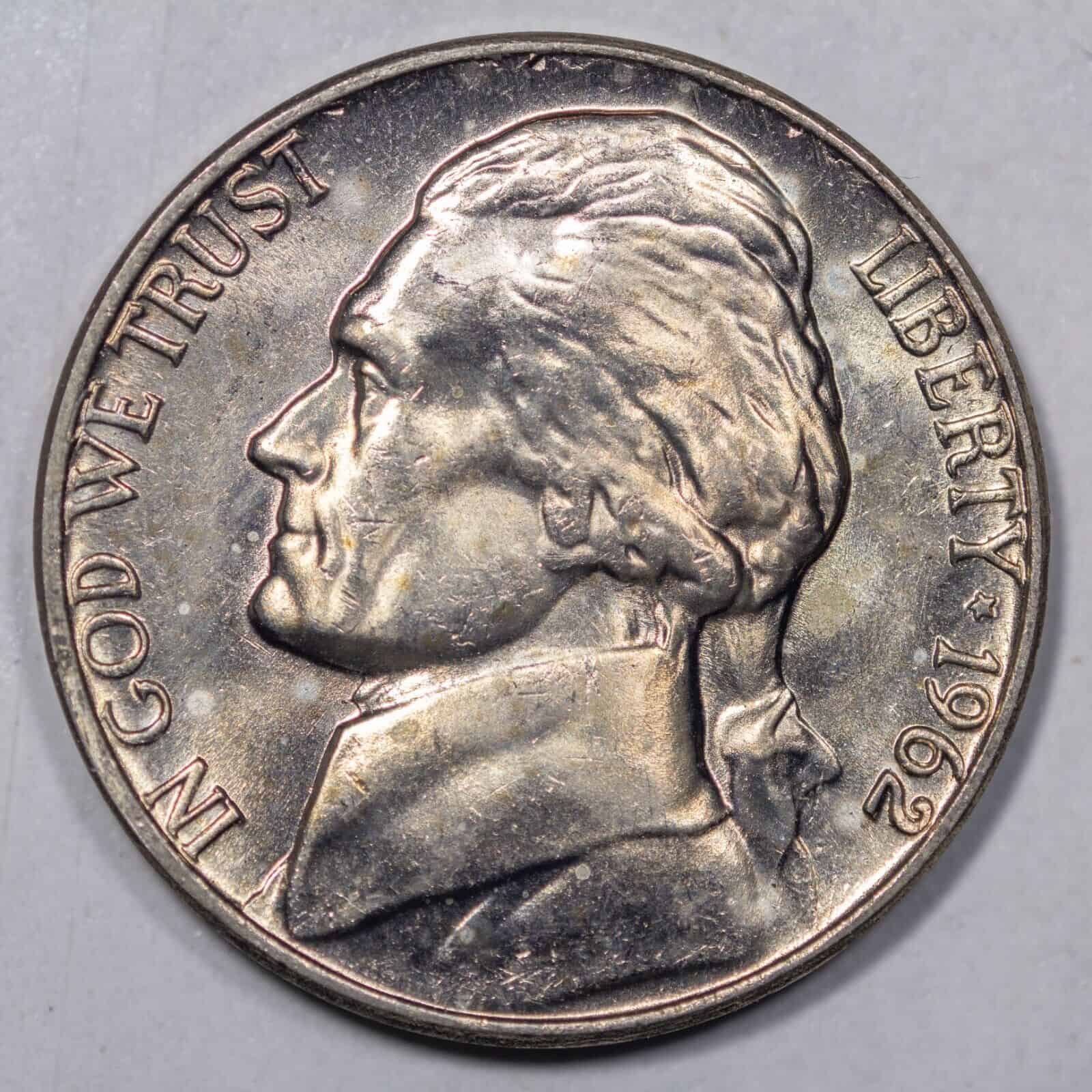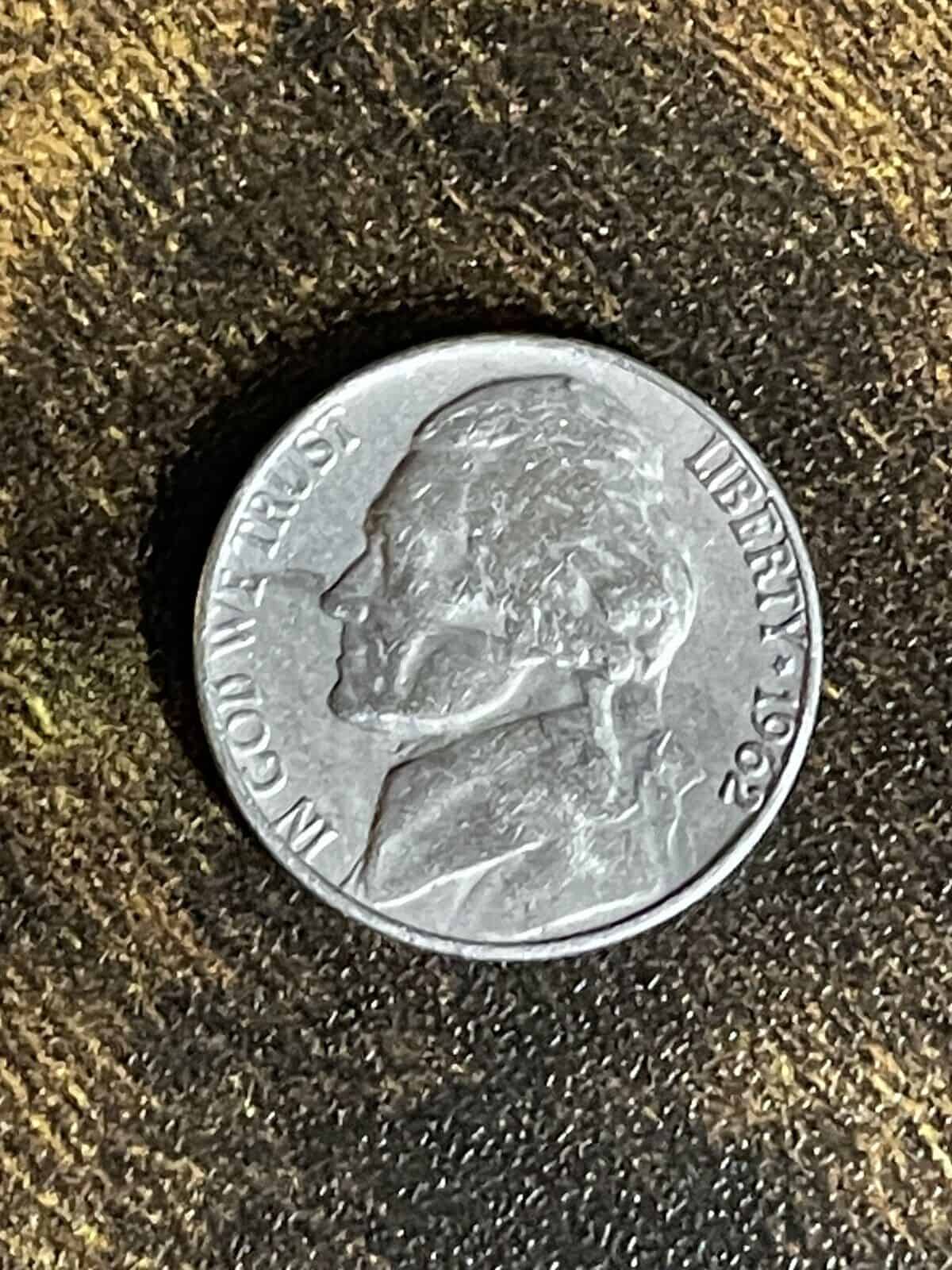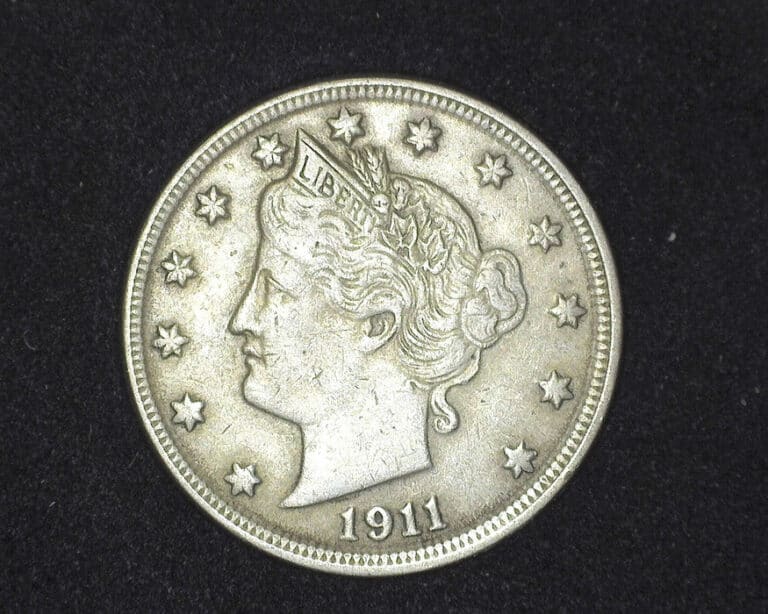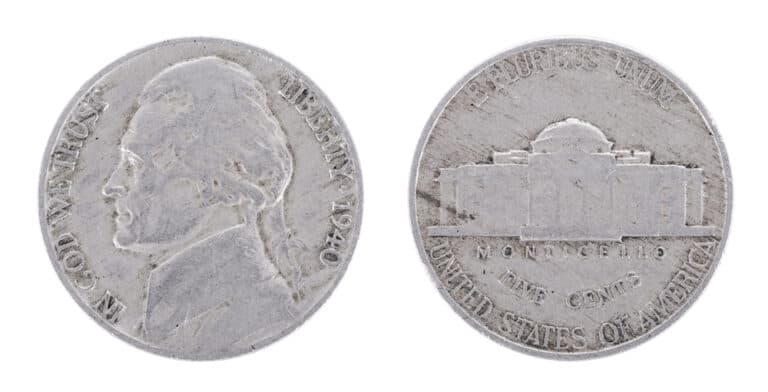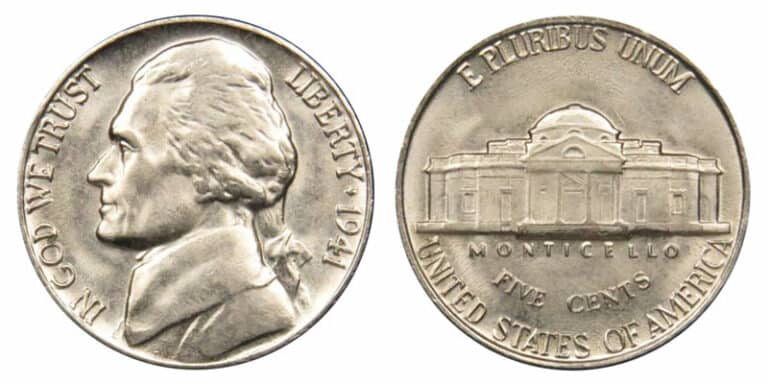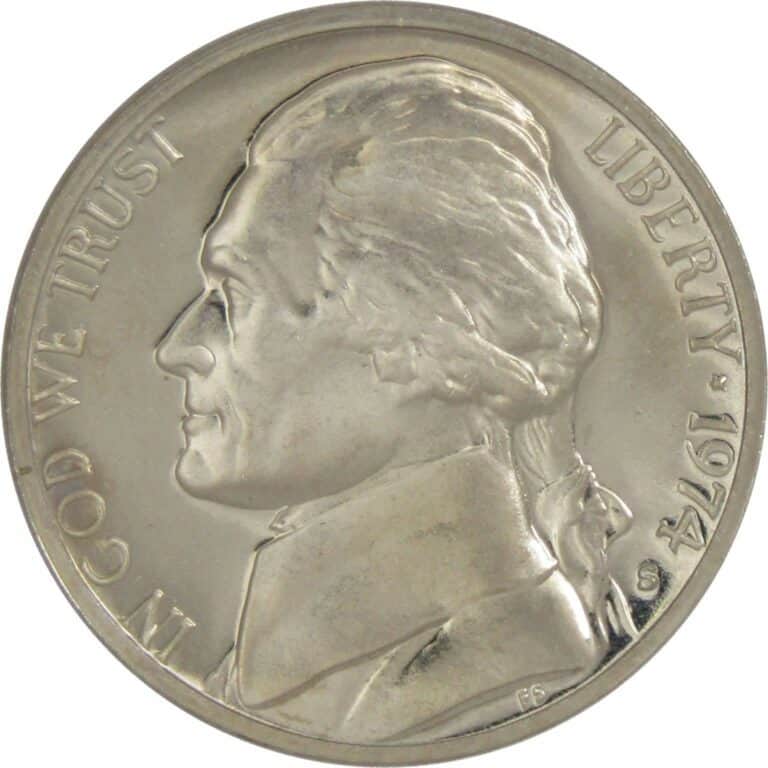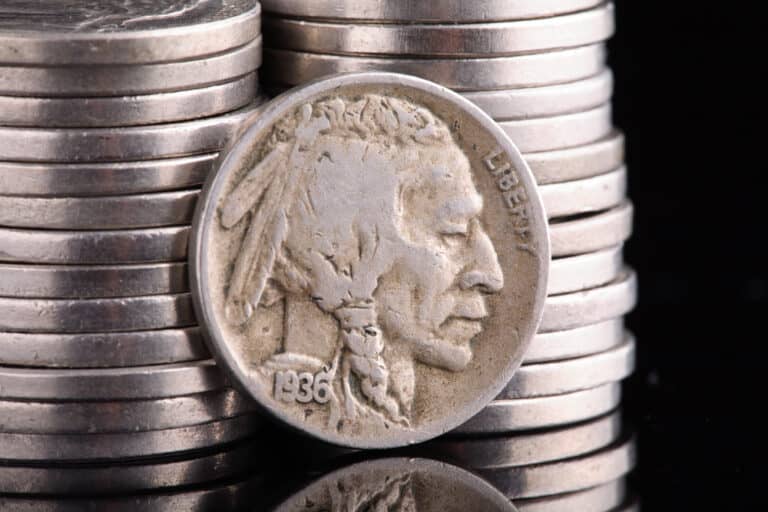1962 Nickel Value: How Much Is It Worth Today?

The US Mint has been making 5-cent coins with the image of former president Thomas Jefferson ever since they replaced the old Buffalo nickel in 1938. And, even though the justification for the change back then was that coin designs ought to get changed every 25 years, the Jefferson nickel has been minted and in use in the US for nearly a century.
So, if there are so many Jefferson nickels out there, is the 1962 special in any way, or is it just like any other nickel? If you’ve got such a coin on you, is it worth anything or should you just toss it back in your wallet with all the rest? Let’s explore the 1962 nickel below.
1962 Nickel Value Chart |
||||
| Mint mark | Good | Fine | Extremely Fine | Uncirculated |
| 1962 “D” Nickel Value | $0.10 to $0.85 | $2.50 to $5 | $12.50 to $17.50 | $42 to $500 and above |
| 1962 No Mint Mark Nickel Value | $0.10 to $1 | $2.50 to $6 | $12.5 to $20 | $40 to $325 and above |
| 1962 Proof No Mint Mark Nickel Value | $1 to $4 | $4 to $12 | $12 to $32 | $40 to $675 and above |
Given that 1962 nickels have been in wide circulation for decades, just like most other Jefferson nickels, it should come as no surprise that the value of most of them is barely higher than their face value – $0.05 to $0.10 at most.
When we start looking at 1962 nickels that are preserved in a little higher quality than most other coins that made it into wide circulation, however, we can start seeing somewhat higher value – up to a dollar for good-quality nickels, several dollars for fine coins, and even higher for the few extremely finely-preserved specimen.
If you want to truly find worthwhile nickels, however, you’re going to have to look for uncirculated nickels – coins that were never really used as currency but were grabbed by collectors right away. Especially when such coins happen to have some unique features and manufacturing errors, they can be worth up to several hundred bucks or even over $1,000.
1962 “D” Nickel Value
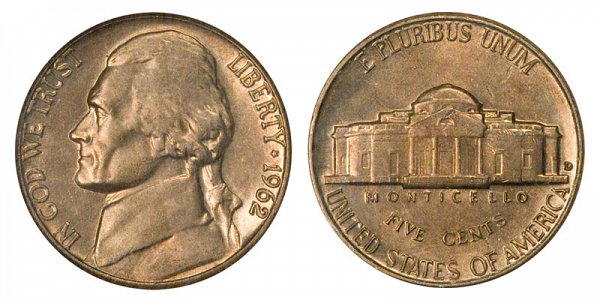
As is the case with most other years in the mid-20th century, the Denver Mint produced the largest number of nickels in 1962 by far. A total of 280,195,720 five-cent coins were made in Denver that year, compared to about three times fewer coins made by the Philadelphia Mint (although, there is a bit of confusion about that number, more on that below).
Naturally, with so many coins made that year, it’s difficult to say that 1962 nickels with a “D” mint mark are exactly rare. This doesn’t mean that individual “D” nickels can’t be seen as rare, however – after all, the majority of those coins were released in wide circulation and have way too much wear and tear by now to be worth anything above their face value.
So, if you can find a 1962 “D” nickel that’s in mint or near-mint condition, that can be quite rare. If the coin also happens to have an interesting and rare manufacturing error on it or another unique detail, it can still be very valuable to collectors. If you happen upon such a coin, you can easily expect to get a price tag of at least a few hundred dollars for it.
In fact, there are 1962 “D” nickels that have sold for even more than that – a 1962 “D” nickel of MS 65 quality was sold for $3,525 in 2020 at Legend Rare Coin Auctions, for example. Similarly, a 1962 “D” MS 67 nickel was sold for $2,995 in 2022 on eBay.
Do these high prices mean that there is something extra special in the 1962 “D” nickel, however? No, not really. Both the “D” mint and the two others we’ll mention below look just like any other Jefferson nickel.
Both the obverse and the reverse sides of these coins are designed by Fexil Schlag and are just as they were first made for the 1938 release of the Jefferson nickel. They weigh about 5 grams, they measure 21.2 mm in diameter, they have plain edges, and they are made with a copper core and a 75% copper plus 25 nickel layer on top of it.
The obverse side features the left-facing head of the former president with the words “In God we trust” to the left of it and “Liberty – 1962” to the right. The reverse has a bit more things on it – it features the famous Monticello building in the center – Jefferson’s residence in West Virginia – and the name “Monticello” right below it.
On the top of the reverse is the motto “E Pluribus Unum” or “From many, one”, below the Monticello is written “Five Cents”, and at the bottom, it says “United States of America”.
The only unique thing about the Denver-made 1962 nickel – and the way to tell it apart – is the tiny “D” mint mark on the right of the Monticello. So, unless you’ve got a mint-state 1962 “D” nickel with a particularly interesting manufacturing error in it, there is just no reason to expect the price of your coin to go too high beyond its face value.
1962 No Mint Mark Nickel Value
Onto everyone’s favorite trap for people new to numismatics – no-mint-mark coins. In this case – the 1962 No Mint Mark Nickel. For a lot of people, when they first see a coin with no mint mark, they assume that they’ve got a very valuable coin with a rare error on it. Unfortunately, that’s almost never the case.
Instead, coins with no mint marks on them almost always simply indicate that they’ve been produced by the Philadelphia Mint. This is the case with 1962 nickels with no mint marks too – that Mint simply (almost never) didn’t use mint marks before the 1980s.
So, does this mean that a 1962 nickel with no mint mark is exactly the same as any other Jefferson nickel? More or less – yes. The design and parameters of this nickel are identical to nickels made in Denver – the tiny “D” mint mark to the right of the Monticello on the reverse is simply missing.
The only other difference is in the mintage – the Philadelphia Mint did produce a significantly smaller quantity of nickels in 1962 than the Denver Mint – 97,384,000 coins, according to the Numismatic Guaranty Company. Some sources do cite a higher number – up to 110,602,019 – but we can’t confirm that.
Regardless, the Philly mintage is close to three times lower than that of Denver in 1962 which is a tendancy that wasn’t all that uncommon in the mid-20th century. From that, you can easily assume that nickels with no mint marks would be more valuable because they are rarer.
Yet, that’s not entirely true either. While, in the lower quality grades, 1962 nickels with no mint marks can be slightly more highly valued than those with a “D” mint mark, once we start getting to the higher quality grades, things start evening out. In fact, uncirculated 1962 nickels with “D” mint marks are slightly more highly valued than their Philly counterparts on average.
So, not only is the lack of a mint mark not something extra rare and special, it’s actually more or less inconsequential.
1962 Proof No Mint Mark Nickel Value
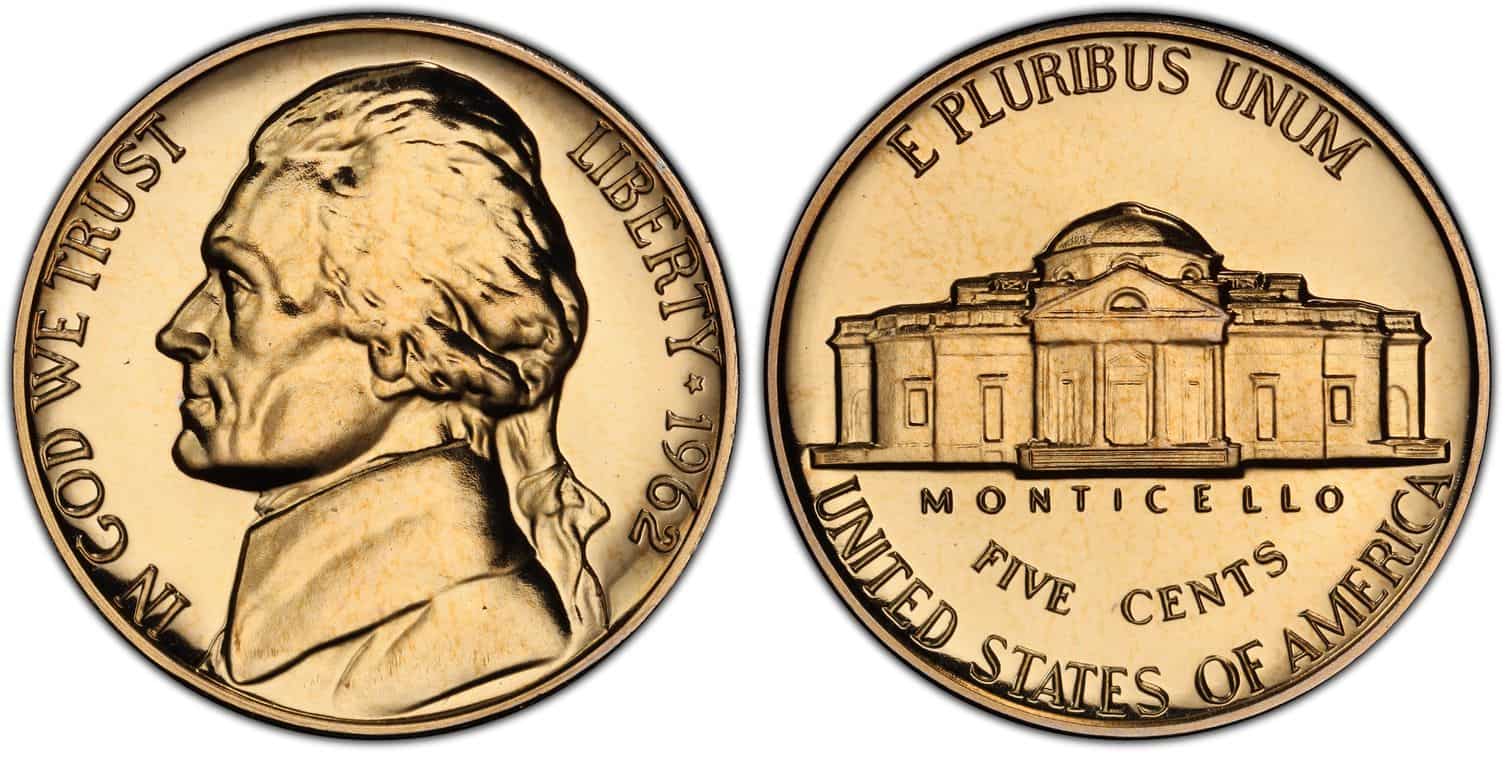
A more valuable type of 1962 nickel with no mint mark is the proof nickel. In 1962, those also came from the Philadelphia Mint even though they are typically made by the San Francisco Mint in most other years.
What is a proof nickel, however? As with any other coin, proof coins are rare variants of the base coin that are minted with much higher fidelity. These coins are more expensive to make but have a lot more detail and are typically meant to be used as proof against fakes.
As with all rare things, however, they are valued by collectors which is why the US Mint often makes at least a couple million of them every year to sell to collectors for profit. In the case of the 1962 nickel, the Philly Mint made 3,218,019 such coins.
Since a lot of these 1962 proof nickels are still available on the market today, however, their average value isn’t all that impressive even with their higher quality. Proof coins will almost always be more valuable than regular coins in the lower quality grades but when we start looking at Extremely Fine or Uncirculated coins, things once again even out.
So, as with those coins, the only proofs that are valued particularly high are those with rare manufacturing errors.
1962 Nickel Grading
Grading Jefferson nickels from 1962 is done the same way as it is for any other coin – you simply look at how well-preserved the coin is, how rare it is, and whether or not it has certain special manufacturing errors.
Ideally, a coin will be of near-mint or uncirculated quality, it will be rare, and it will have an interesting error. Otherwise, you just can’t expect to get a very high price for it.
Lists of 1962 Nickel Errors
1962 nickels can exhibit a wide range of errors, just like any other coin that’s been minted in substantial enough quantities. Not all errors are created equal, however, as some are interesting and pretty to look at while others are pretty plain and don’t enhance the look or value of the coin even if they are relatively rare.
There are some great videos you can check out that will showcase the different cool errors you can encounter in 1962 nickels but let’s list some of the most noteworthy ones below.
1962 Nickel Full Steps Error

The famous full steps (or just FS) Jefferson nickel is one where the reverse side of the coin (the one with the Monticello on it) has received an extra strong die strike. As a result, the details on that side are especially pronounced and noticeable. This is most easy to spot on the Monticello’s entrance steps, hence the name “Full Steps Nickel”.
Jefferson nickels with the FS error – both from 1962 and other years – can command the highest prices, almost always in the thousands of dollars and sometimes even in the 5-digit range as was the case with a 1962 MS 67+ FS Jefferson nickel that was purchased for $21,150 in 2013 at the Heritage Auctions.
1962 Nickel Double Die Error
Double die errors happen when the coin has shifted slightly in between the two strikes of the minting die. When this happens, the image on either the obverse or the reverse of the coin will be slightly distorted or blurry. This type of error can often look quite nice and interesting, hence why it’s desirable.
1962 Nickel Die Crack Error
A minting die cracks when it’s been overused too much and hasn’t been replaced in time. When such a die hits a coin, the cracks can start becoming noticeable on the coin’s design, usually on some of the letters or numbers on it. These errors can also be valuable when they are subtle enough.
1962 Nickel FAQ
How do you know if you have a rare 1962 Nickel?
For a 1962 nickel to be worth anything substantial it needs to be of near-perfect uncirculated quality and it needs to have some interesting manufacturing errors on it. Without the latter, a near-mint nickel can still cost a few dollars or even a few dozen dollars but nothing that’d be all that noteworthy.
Which is the most valuable 1962 Nickel?
The most famous and valuable 1962 nickel we’ve found is a 1962 MS 67+ Full Steps nickel that was sold for $21,150 in 2013. It was a proof nickel which naturally means higher fidelity and quality but the Full Steps error further guaranteed its very high price.
